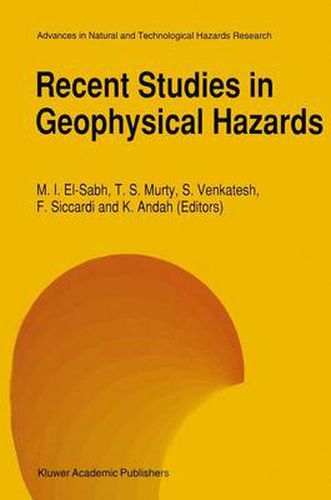Readings Newsletter
Become a Readings Member to make your shopping experience even easier.
Sign in or sign up for free!
You’re not far away from qualifying for FREE standard shipping within Australia
You’ve qualified for FREE standard shipping within Australia
The cart is loading…






This title is printed to order. This book may have been self-published. If so, we cannot guarantee the quality of the content. In the main most books will have gone through the editing process however some may not. We therefore suggest that you be aware of this before ordering this book. If in doubt check either the author or publisher’s details as we are unable to accept any returns unless they are faulty. Please contact us if you have any questions.
Between 1974 and 1994 the costs of natural disasters escalated significantly. The lives of over 800 million people were disrupted and the number of catastrophes nearly quadrupled. At present, the increasing global threat of natural disasters, in spite of our increased knowledge, is ominous. With the growth in world population, the increase of resources in newly developing areas, and the increasing cost and sophistication of engineering structures and technical installations, there is an urgent need to seek to understand the potential threats posed by natural hazards and to ascertain the best ways of mitigating their damaging effects. To meet this urgent threat, the United Nations (UN) General Assembly passed a Resolution on December 22, 1989 which declared the 1990s to be the International Decade for Natural Disaster Reduction (IDNDR). As a contribution to the decade, the International Symposium Hazards-91 was held in Perugia, Italy, from 4-9 August 1991. The conference was attended by specialists from 34 countries, and a total of 110 papers were presented at 20 sessions, covering a broad range of topics which proved to be of significant value for future research. The 16 articles included in this book provide an overview of the state-of-the-science in geophysical hazards including climatic, atmospheric, hydrological and geological hazards. Furthermore, the results of a panel on the IDNDR and the recommendations adopted during the meeting are presented at the end of this volume. The text should thus be a useful reference source for scientists, engineers and policy makers.
$9.00 standard shipping within Australia
FREE standard shipping within Australia for orders over $100.00
Express & International shipping calculated at checkout
This title is printed to order. This book may have been self-published. If so, we cannot guarantee the quality of the content. In the main most books will have gone through the editing process however some may not. We therefore suggest that you be aware of this before ordering this book. If in doubt check either the author or publisher’s details as we are unable to accept any returns unless they are faulty. Please contact us if you have any questions.
Between 1974 and 1994 the costs of natural disasters escalated significantly. The lives of over 800 million people were disrupted and the number of catastrophes nearly quadrupled. At present, the increasing global threat of natural disasters, in spite of our increased knowledge, is ominous. With the growth in world population, the increase of resources in newly developing areas, and the increasing cost and sophistication of engineering structures and technical installations, there is an urgent need to seek to understand the potential threats posed by natural hazards and to ascertain the best ways of mitigating their damaging effects. To meet this urgent threat, the United Nations (UN) General Assembly passed a Resolution on December 22, 1989 which declared the 1990s to be the International Decade for Natural Disaster Reduction (IDNDR). As a contribution to the decade, the International Symposium Hazards-91 was held in Perugia, Italy, from 4-9 August 1991. The conference was attended by specialists from 34 countries, and a total of 110 papers were presented at 20 sessions, covering a broad range of topics which proved to be of significant value for future research. The 16 articles included in this book provide an overview of the state-of-the-science in geophysical hazards including climatic, atmospheric, hydrological and geological hazards. Furthermore, the results of a panel on the IDNDR and the recommendations adopted during the meeting are presented at the end of this volume. The text should thus be a useful reference source for scientists, engineers and policy makers.